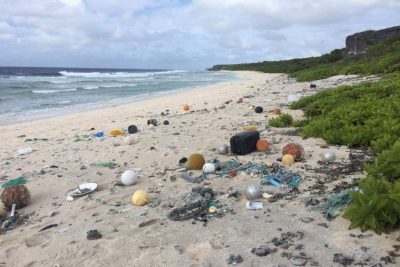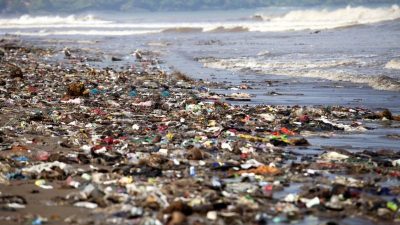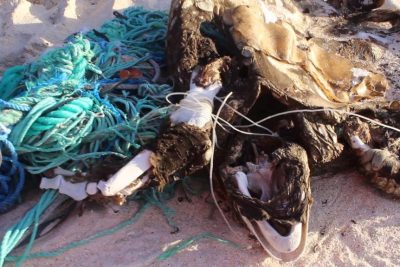The plastic bottle you threw might have gone to this island
The plastic problem in our living environment especially in the ocean has become a global crisis. The data shows that one truckload of plastic garbage is dumped into the sea every minute then the marine ecology is polluted and the marine life is harmed. and this will eventually brings a heavy negative impact on humans.
Tropical islands in the Pacific might be like this in your imagination: pure , clean , blue & white with sunshine, waves hitting the beach.

Probably not like this:

(Henderson Island is an uninhabited island in the British Pitcairn Islands in the South Pacific.)
This uninhabited island named Henderson Island, with about 37.7 million pieces of plastic garbage scattered on the beach, is listed as the most severely polluted place on earth.
According to British and Australian scientists jointly published a research report in the Proceedings of the National Academy of Sciences of the United States.
They stated that the density of plastic waste on this island is 671 pieces per square meter and weighs 17 tons, which is the highest in the world.(source from:https://www.bbc.com/news/world-australia-39931042)
That’s why this phenomenon is quite obvious – it is located close to the center of the South Pacific circulation. All kinds of garbage made by humans drift with the flow, and finally land on Henderson Island, especially those cannot be decomposed, such as plastic and rubber.
 (Researchers estimate that there are 37.7 million pieces of garbage on Henderson Island)
(Researchers estimate that there are 37.7 million pieces of garbage on Henderson Island)
Henderson Island is 5000 kilometers away from Chile and is usually uninhabited. Only scientists will land on the island to conduct scientific research every five to ten years.
UNESCO listed it as a coral atoll, with a unique ecological environment, inhabiting 10 species of plants and 4 species of birds.
But, it became a garbage dump.
Dr. Lavers of the University of Tasmania pointed out that Henderson Island shows that plastic pollution is a global problem. Every country and inhabitant of the earth is a producer and victim of plastic waste.
“It’s a bit of a hard message for me to have to share with the world,” Dr Jennifer Lavers from the University of Tasmania said.
“Despite all of our knowledge, planning, money and expertise, we could not get any of the plastic off Henderson Island. It is still there.”
The team spent a month collecting half of the 18 tonnes of plastic on the island, often in sweltering heat.
Talking about how to solve this problem, Jennifer Lavers said: “the key is to prevent plastic from getting in the oceans .But there’s little if anything that we can do, to really clean it up and get it out ,so the key is really behaviour and societal change, that it breaks our plastic addiction. “
 (Island beaches in the South Pacific Circulation Zone)
(Island beaches in the South Pacific Circulation Zone)
The research of plastic particles has become a new research field in environmental science.
Studies have shown that more than 200 kinds of marine life, including fish and turtles, are threatened by the ingestion of plastic garbage, and 55% of seabirds are threatened by marine garbage.
The garbage accumulated on the beach has become a dangerous barrier among sea turtles, sea lions, walruses and other creatures, and destroyed the natural ecological environment of the coastline.
A study once found that 90% of seabirds on the earth have swallowed plastic. By 2050, it is certain that all seabirds found dead have plastic in their stomachs.
(source from:https://www.epa.gov/trash-free-waters/impacts-mismanaged-trash)

BBC Science and Technology Affairs Editor David Shukman (David Shukman) once accompanied the Plymouth Marine Laboratory expedition team to the Pacific Ocean Midway.
Every sample they collected there contained plastic fragments or particles, about a third of which came from plastic bags and food packaging.
The plastic particles are swallowed by fish and shrimp in the sea, and then enter the food chain, rising from the bottom of the sea to supermarkets and fish stalls in the city, and finally enter the human intestines.
Something begin for protect
A 22-year-old guy from the Netherlands, Boyan Slat, opened a company in 2014 called Ocean Cleanup.
The specific idea is as follows: use a U-shaped floating platform as an “artificial coastline”, move at a slower speed than the flow of plastic garbage, collect garbage while walking. And push the collected garbage into the “collection station”, discharge the water, land, and then transport to the recycling factory for processing, and finally make car gears, sunglasses, etc.
Fish can still swim freely underwater without being blocked.
The company’s goal is to clean up 50% of the garbage in the Great Pacific Garbage Strip in 5 years.
(source from:https://theoceancleanup.com)
Save the earth
Initially, humans have produced 8.3 billion tons of plastic products.
As of 2015, these plastic products produced a total of approximately 6.3 billion tons of plastic waste. Of these, 9% are recycled, 12% are incinerated, and 79% are buried in the ground into the natural environment, including the ocean.
(source from:https://www.nationalgeographic.com/news/2017/07/plastic-produced-recycling-waste-ocean-trash-debris-environment/#close)
If calculated according to the current scale of production and waste disposal, 12 billion tons of plastic waste will be generated in 2050.
Marine plastic pollution is a worldwide problem and requires a worldwide solution.
Otherwise, although we stand at the top of the biological chain, we will eventually become victims of plastic pollution.
Next time you want to throw away plastic bottles or bags at will, will you do it after more consideration, we only have one earth. Please protect this earth for yourself and the next generation.
